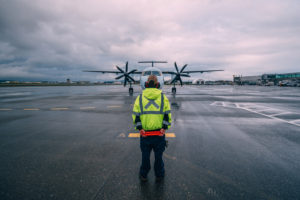GOVERNMENT AWOL AS CUTS TO REGIONAL AIR SERVICE THREATEN RECOVERY
 With Air Canada forecasting in July it would continue burning through cash reserves at the rate of between $15 and $ 17 million per day if its medium-term outlook did not improve, the decision, announced last week, that it was planning additional cuts to air service in Atlantic Canada was predictable.
With Air Canada forecasting in July it would continue burning through cash reserves at the rate of between $15 and $ 17 million per day if its medium-term outlook did not improve, the decision, announced last week, that it was planning additional cuts to air service in Atlantic Canada was predictable.
The real surprise was not Air Canada’s announcement, but that the federal government would continue sitting on its hands, as it has since the start of the pandemic, while regional air service is slashed.
And make no mistake; this is not an Atlantic Canada issue. It is a national issue that, if left unaddressed, will linger painfully for months after the coronavirus vaccine starts kindling a return to economic and social normalcy in Canada’s largest urban centres.
On top of massive restructuring measures, including laying off thousands of workers and parking billions of dollars’ worth of aircraft equipment, both Air Canada and WestJet have been shedding domestic capacity for months in an effort to weather the pandemic storm.
parking billions of dollars’ worth of aircraft equipment, both Air Canada and WestJet have been shedding domestic capacity for months in an effort to weather the pandemic storm.
Whether it be northern Ontario and Quebec, the interior of British Columbia, or Atlantic Canada, if not addressed quickly, the economic and social fallout from cuts to regional air service will cast a dark cloud on the prospects of a speedy post-pandemic recovery in those regions.
The reasons are rooted in the economic, operational and competitive reality of commercial aviation.
First, regional routes are generally less profitable than long haul domestic or international flights because carriers’ fixed costs are amortized over a smaller number of passengers per mile than on long haul flights that use larger and more fuel-efficient aircraft.
Second, Canada’s domestic industry is currently operating at a fraction of its normal capacity. It will take time – months, if not longer — before it is back to full strength.
Getting airline capacity back to where it was a year ago will mean bringing back thousands of furloughed employees and dozens of planes that were grounded in the wake of the pandemic.
Many airline employees such as pilots, will need to be recertified, while others will require additional training to deal with things such as health and safety policies introduced after their layoff. This will take time.
Then there’s the matter of bringing the fleet back online. You can’t just take a $ 150 million aircraft that’s been on blocks for a few months, taxi to the gate and say welcome aboard.
Planes that have been sitting idle for any length of time will need to undergo nose-to-tail inspections that can each take days and cost hundreds of thousands of dollars before they’re deemed airworthy again. This too takes time.
Finally, while our domestic carriers will be busy gearing up for the anticipated uptick in economic activity and travel next fall, they will also have to be mindful of competition from foreign carriers – including US carriers – that have enjoyed massive government assistance that has given them a capacity advantage and enhanced their ability to cherry-pick the Canadian marketplace.
No one should be surprised when Canadian carriers this fall allocate all available capacity — equipment and staff — to serve their large domestic hubs to take advantage of the long-awaited domestic recovery and safeguard market share from foreign competition.
And no one should be surprised when smaller communities in Atlantic Canada, northern Ontario, northern Quebec, western Canada and in the interior of BC are left out in the cold – again – as the rest of the country starts to pick itself up from the pandemic winter.
The inescapable truth is that government inaction in addressing the unprecedented crisis faced by our air transportation sector will only make regional inequalities worse and accelerate the exodus of residents from regional centres.
Fortunately, mitigating its impact won’t require complex policy solutions – only political will.
First it requires the political will to acknowledge that while assisting air carriers during a global pandemic may not be woke, it is nonetheless necessary.
Then it requires the political will to acknowledge that this crisis is made worse by government user pay policies that syphon billions of dollars from air travellers and airlines each year to pay for airport infrastructure, air navigation and airport security.
Finally it requires the political will to act by providing liquidity assistance for carriers, and cutting the taxes and third party charges that weigh down their air operations like so much ballast.
If the government of Canada continues to avoid addressing these issues, for many – particularly young people — whether in Atlantic Canada or northern Quebec, or any other region that fears seeing its local airport shuttered long after the rest of the country opens up, their next flight could be a one-way ticket out.
Related content: Covid Crisis an Opportunity to Reimagine Air Travel